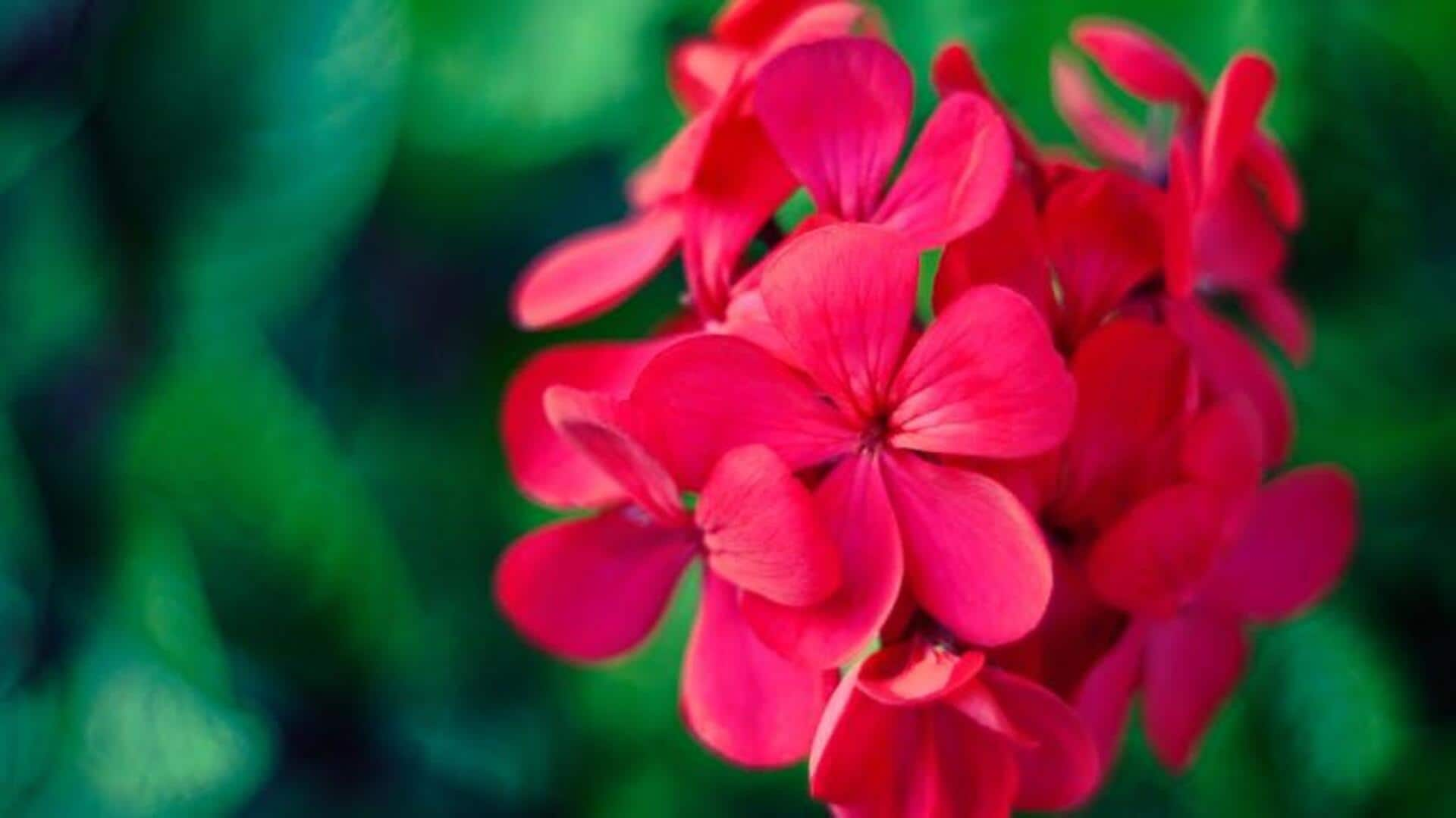
Gleaming geraniums: 5 blooming brilliance techniques
What's the story
Geraniums, known for their bright colors and easy care, are a favorite among gardeners globally. However, these plants need particular attention to reach their full potential. This article provides five crucial tips for caring for geraniums to guarantee your garden is filled with vibrant flowers. By following these suggestions, gardeners can optimize the beauty and health of their geraniums.
Soil selection
Select the right soil mix
Geraniums prefer well-draining soil that is rich in organic matter. An ideal mix is two parts peat moss, one part perlite, and one part compost. This provides excellent drainage and supplies the necessary nutrients. This specific mix is crucial to avoid waterlogging, which leads to root rot, a common issue with these plants. With this soil mix, gardeners can provide the perfect environment for geraniums to thrive.
Sunlight needs
Ensure adequate sunlight
Geraniums need a lot of sunlight—at least six hours of direct sun a day—to bloom well. If you have them indoors, the best place to keep them is near a south-facing window. In areas where summers are very hot, giving them some afternoon shade will keep the plants from burning but still let them get enough light to flower.
Watering routine
Regular watering schedule
Although geraniums can tolerate dry conditions once established, they thrive with consistent watering. Let the top inch of soil dry out before you water again, but water deeply when you do. If you over-water or let the plants sit in water, they can develop fungal diseases. In hot weather, you might need to water them more often.
Feeding time
Fertilize for growth and blooms
To keep your geraniums thriving, fertilize them bi-weekly with a balanced liquid fertilizer, diluted to half its strength. This routine promotes strong growth and abundant blooms. Just be careful not to over-fertilize, as this can lead to more leaves than flowers. In winter or when growth slows, cut back on feeding.
Maintenance tips
Pruning and deadheading
Regular pruning is key to promoting bushier growth and a profusion of blooms in geraniums. Gardeners should regularly remove any dead or yellowing leaves and spent blooms (this is called deadheading) to conserve the plant's energy for new flower production instead of seed formation. And, if you are growing perennial types, a good annual pruning in early spring will greatly invigorate the plants, setting the stage for a spectacular display.